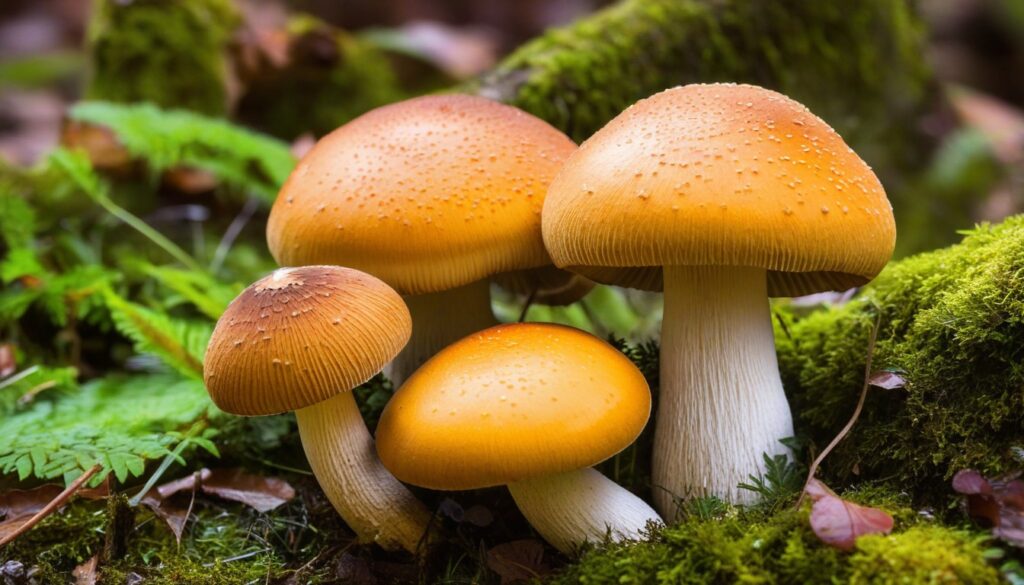Welcome to New Hampshire, a state brimming with natural beauty, adventure, and culinary treasures. In this forager’s guide, we will explore the world of edible mushrooms found in the verdant forests and rolling hills of this scenic state. Whether you are an experienced forager or a newbie, there is much to discover in the diverse and thriving mushroom populations of New Hampshire.
Key Takeaways:
- New Hampshire is a haven for foraging edible mushrooms, and there are numerous species that can be harvested.
- Knowing safety guidelines is crucial to avoid poisonous mushrooms and to preserve the natural environment.
- Foragers need to know the proper techniques for preserving and storing mushrooms to enjoy their taste later.
- Proper identification of edible mushroom species and the best times to hunt for them are essential for a successful foray in mushroom hunting.
- There are many delicious and healthy mushroom recipes that showcase the unique flavors of New Hampshire.
Benefits of Foraging Edible Mushrooms
Foraging for edible mushrooms in New Hampshire not only allows you to connect with nature but also provides numerous benefits. Here are some of the benefits of foraging edible mushrooms:
Nutritional Value
Edible mushrooms are a great source of vitamins, minerals, and antioxidants. They are low in calories and fat, making them an excellent addition to a healthy diet.
Potential Health Benefits
Some edible mushrooms have been used medicinally for centuries and have been found to have anti-inflammatory and immune-boosting properties. They may also have potential anti-cancer properties.
Environmental Sustainability
Foraging mushrooms is an eco-friendly way to source food as it reduces the need for intensive farming practices and packaging. It encourages a connection with the natural environment, thereby promoting conservation efforts.
Tip: Always remember to forage sustainably and follow proper identification guidelines. Respect the ecosystem and only take what you need.
Safety Guidelines for Mushroom Foraging in New Hampshire
Mushroom foraging in New Hampshire can be a wonderful and rewarding experience, but it’s important to prioritize safety while exploring the great outdoors. Follow these guidelines to help ensure a safe and successful foraging trip:
Proper Identification
Before consuming any wild mushroom, it’s crucial to positively identify it as an edible species. Take the time to learn the distinct characteristics of each edible mushroom and always cross-reference your identification with trusted resources such as field guides or online forums. When in doubt, err on the side of caution and avoid consuming any mushroom you’re unsure about.
Avoid Poisonous Varieties
In addition to learning to identify edible species, it’s equally important to recognize and avoid toxic or poisonous mushrooms. Some poisonous mushrooms can lead to severe illness or even death, so it’s crucial to steer clear of any unfamiliar or suspicious-looking specimens. Always remember – if in doubt, leave it out!
Respect the Environment
When foraging for mushrooms, it’s essential to be mindful of sustainability and conservation practices. Avoid disturbing the natural environment by carefully navigating around delicate plants and wildlife habitats. Take care not to damage or uproot any mushrooms during your hunt, and never leave behind any litter or waste.
By following these safety guidelines, you can enjoy a successful and safe mushroom foraging expedition in the beautiful landscape of New Hampshire.
Common Edible Mushroom Species in New Hampshire
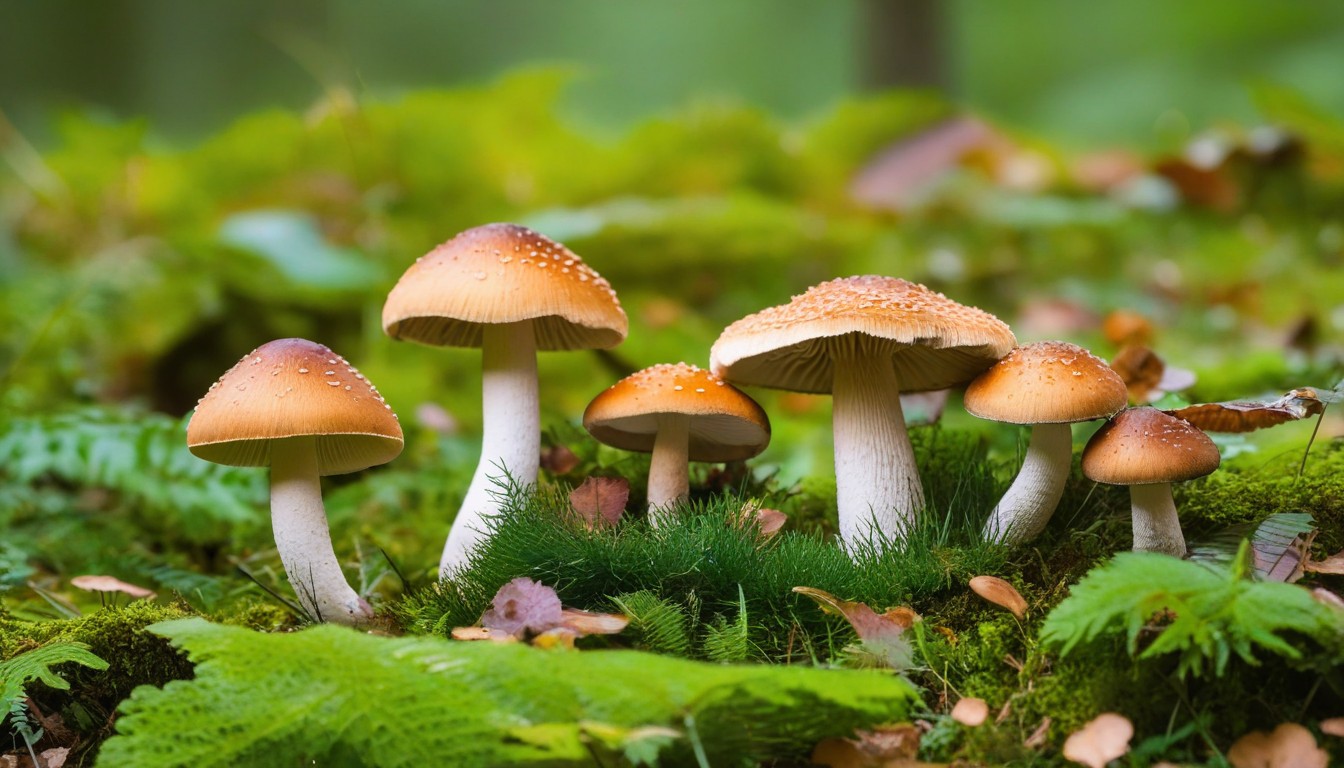
For nature lovers and food enthusiasts alike, mushroom foraging is an exciting adventure that can reward with delicious and nutritious finds. Before venturing out, however, it’s crucial to have a basic understanding of the most common edible mushroom species found in New Hampshire. These species are:
|
Mushroom species |
Characteristics |
Habitat |
Growing conditions |
|---|---|---|---|
|
Boletus edulis |
Meaty, nutty flavor with white stem and brown cap |
Conifer forests |
Grows in groups near fir, spruce, or pine trees during August-September |
|
Ganoderma applanatum |
Fan-shaped with reddish-brown top and white pores underneath |
Hardwood trees |
Grows all year-round, but best during late summer and fall |
|
Cantharellus cibarius |
Bright yellow with a vase-shaped cap and forked gills |
Deciduous and mixed woodlands |
Grows in small groups or scattered in summer and fall |
|
Lactarius deliciosus |
Orange-yellow cap and orange milk when cut |
Pine forests and sunny clearings |
Grows in summer and fall with abundant rainfall |
|
Hydnum repandum |
Wavy, fan-shaped cap with creamy white teeth underneath |
Pine or mixed forests |
Grows in groups or individually during summer and fall |
Remember, these are just a few examples of the many edible mushroom species that can be found in New Hampshire. Proper identification is crucial before consuming any wild mushroom, as many poisonous lookalikes exist. Always consult with a local expert or experienced forager if unsure.
Best Locations for Mushroom Foraging in New Hampshire
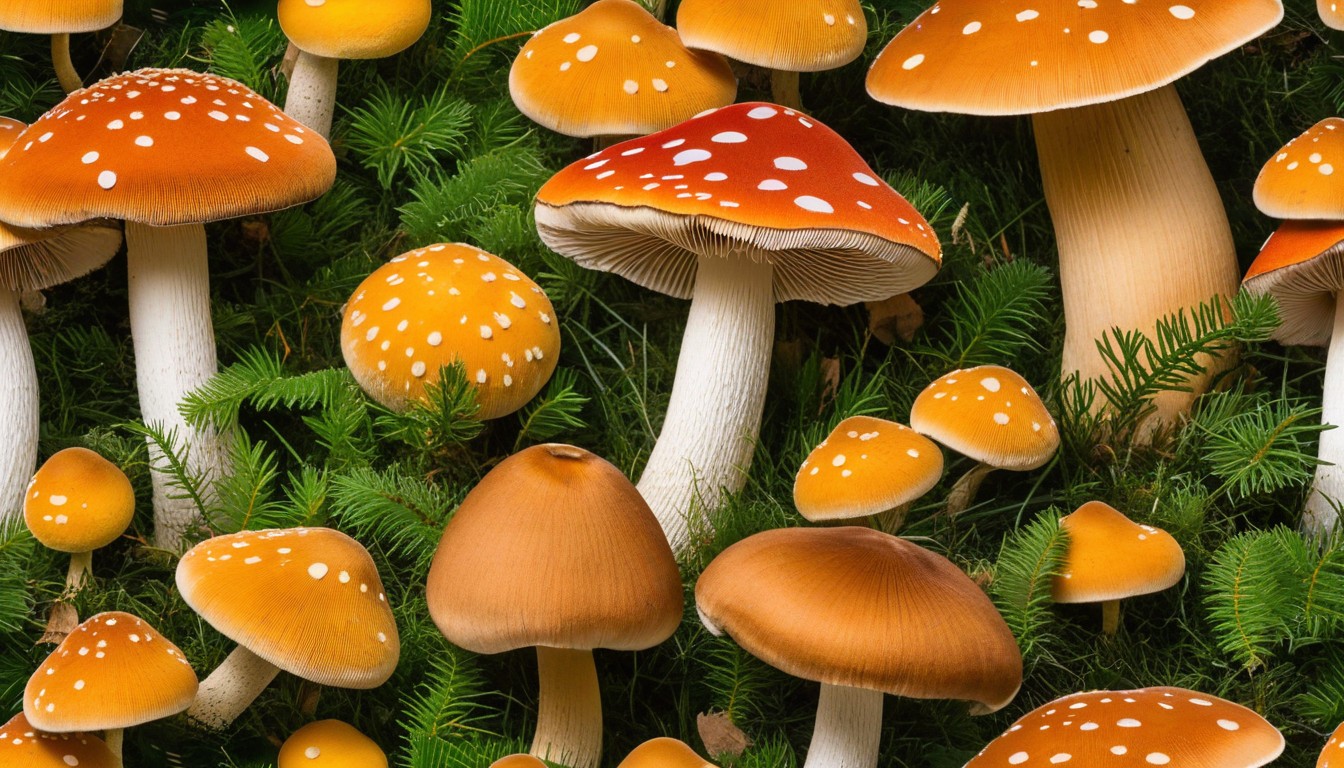
New Hampshire is a haven for mushroom foragers, with diverse terrain and a range of habitats supporting an array of edible mushrooms. Here are some of the best locations in the state to find these delicious treasures.
|
Location |
Notable Edible Mushroom Species |
|---|---|
|
White Mountain National Forest |
Chanterelles, Morels, Black Trumpets |
|
Pawtuckaway State Park |
Hen of the Woods, Oyster Mushrooms, Lactarius |
|
Squam Lake |
Boletes, Lobster Mushrooms, Porcini |
|
Monadnock State Park |
Hen of the Woods, Chanterelles, King Boletes |
These locations offer much more than just a great mushroom haul; they’re also ideal for adventurers who crave stunning natural scenery, wildlife sightings and hiking opportunities. If you’re new to mushroom foraging, consider visiting some of these areas with a knowledgeable guide who can help identify and safely harvest desired species.
Whether you’re exploring forests or parks, be sure to remain respectful to nature and mindful of protected areas. With a little bit of patience, know-how, and a keen eye, New Hampshire offers fruitful foraging opportunities that are sure to satisfy your taste buds and feed your sense of adventure.
Tips for Successful Mushroom Foraging
If you’re new to mushroom foraging in New Hampshire, these tips and techniques will increase your chances of success:
- Timing: Plan your foraging trip during the late summer or early fall when mushroom growth is at its peak.
- Equipment: Bring a basket or mesh bag to store your harvested mushrooms, along with a knife or scissors for cutting. A field guide or app will also be helpful for identifying the mushrooms you collect.
- Location: Look for shaded areas with moist soil and decaying wood. Mushrooms are often found near oak, birch, and pine trees. Don’t forget to limit your foraging to legal areas only.
- Identification: Familiarize yourself with the difference between edible and poisonous mushrooms. Always double-check your finds with a reliable identification guide before consuming.
- Techniques: Scour the ground carefully, looking for signs of bumps or irregularities in the soil that could indicate the presence of mushrooms beneath the surface. Use a gentle twisting motion when picking mushrooms to avoid damaging the root system and ensure the fungi will regrow.
By following these tips, you’ll be well on your way to a successful mushroom foraging trip in New Hampshire.
New Hampshire Mushroom Recipes
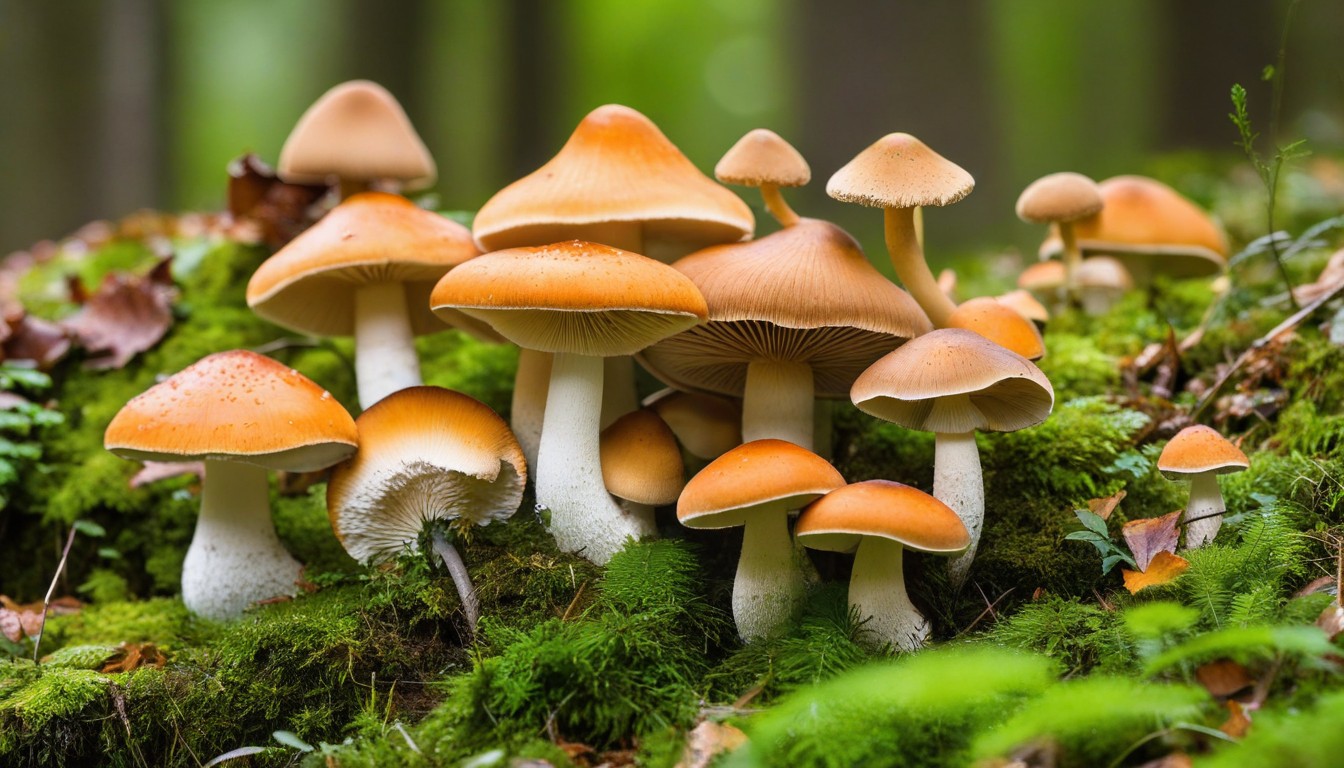
Foraging edible mushrooms in New Hampshire not only offers a unique adventure but also culinary inspiration. From earthy Chanterelles to meaty Porcini, this state boasts a variety of flavorful fungi. Here are a few recipes to help make the most of your foraged treasures:
|
Mushroom and Kale Soup |
Wild Mushroom Risotto |
|---|---|
|
Serves 4 |
Serves 4 |
|
|
|
In a large pot, sauté the mushrooms, onion, and garlic until softened. Add the vegetable broth and kale and bring to a simmer. Let cook for 20-30 minutes. Puree with an immersion blender until smooth. Stir in the heavy cream and season to taste with salt and pepper. |
In a large saucepan, heat the olive oil and butter over medium heat. Add the onion and garlic and sauté until softened. Add the rice and stir to coat in the oil and butter. Add the mushrooms and stir occasionally until they release their liquid. Add the broth a cup at a time, stirring frequently until the rice is cooked through. Mix in the Parmesan cheese and season with salt and pepper to taste. |
New Hampshire is a hub for mushroom enthusiasts and hosts several festivals and events dedicated to fungi. Don’t miss your opportunity to try some of the exquisite mushroom dishes served at these events.
Preservation and Storage of Edible Mushrooms
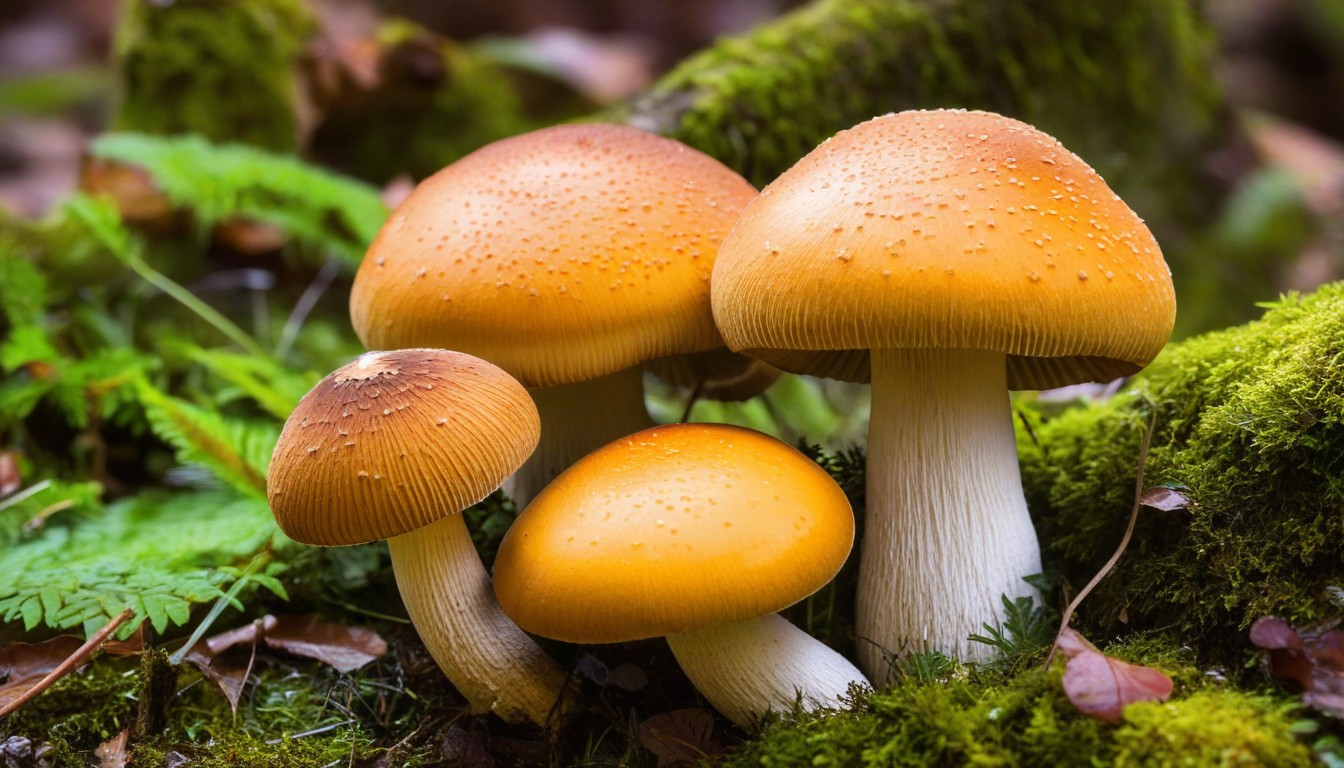
After a successful mushroom foraging trip in New Hampshire, proper preservation and storage techniques are crucial to ensure the longevity of your freshly harvested mushrooms.
Drying: Drying is a simple and effective method to preserve mushrooms. To do this, preheat your oven to a low temperature (150°F), and place sliced mushrooms on a baking sheet lined with parchment paper. Leave them in the oven for several hours until they are completely dry.
Freezing: Freezing mushrooms is a convenient way to store them for future use. Wash the mushrooms thoroughly, slice them, and then blanch them in boiling water for one to two minutes. Then, drain the mushrooms and place them in freezer bags or boxes. They can be stored in the freezer for up to six months.
Pickling: Pickling mushrooms is a delicious way to preserve them. To pickle mushrooms, clean and slice them and then simmer them in a mixture of vinegar, water, and spices for 10-15 minutes. Transfer them to a jar and store them in the refrigerator for up to one month.
Comparison of Preservation and Storage Methods for Edible Mushrooms
|
Method |
Pros |
Cons |
|---|---|---|
|
Drying |
Allows for easy and economical preservation, can last for months |
Can change the taste and texture of the mushroom, requires oven use or dehydrator |
|
Freezing |
Preserves taste and texture of the mushroom, convenient, and can last up to six months |
Requires blanching and freezer space |
|
Pickling |
Preserves taste, adds a delicious tangy flavor, and can last up to one month |
Requires storage in the refrigerator and the use of vinegar |
Proper preservation and storage techniques can help you enjoy the flavors of your successful mushroom foraging trip in New Hampshire for weeks, and even months, to come. Try out these methods and discover which ones work best for you!
Conclusion
Foraging for edible mushrooms in New Hampshire can be a rewarding and nutritious experience that connects you with nature and supports sustainability.
Remember to follow safety guidelines and properly identify mushrooms before consuming them. With practice and patience, you can become an adept mushroom hunter and uncover the many delicious varieties found in the forests and parks of New Hampshire.
Preserve your foraged mushrooms using one of the many techniques discussed in this article to enjoy their flavor year-round. Whether you are a seasoned forager or a curious beginner, there is always more to discover in the world of mushroom hunting.
So grab your basket and head out into the wilderness – your next mushroom adventure awaits!
FAQ
What are some benefits of foraging edible mushrooms?
Foraging edible mushrooms not only provides a rewarding outdoor experience but also offers several benefits. Mushrooms are a rich source of nutrients, including vitamins, minerals, and antioxidants. They can also support immune function, aid in digestion, and promote overall health and well-being.
How can I ensure my safety while mushroom foraging in New Hampshire?
Safety is paramount when foraging for mushrooms. To ensure a safe experience, it is crucial to properly identify edible species, avoid poisonous varieties, and follow ethical foraging practices. It is also recommended to consult field guides or join mushroom foraging groups for expert guidance and support.
What are some common edible mushroom species found in New Hampshire?
New Hampshire is home to a variety of edible mushroom species. Some common examples include chanterelles, morels, chicken of the woods, oyster mushrooms, and maitake mushrooms. These species differ in appearance, habitat, and taste, making each an exciting discovery for foragers.
Where are the best locations for mushroom foraging in New Hampshire?
New Hampshire offers several prime locations for mushroom foraging. Forests, parks, and natural areas with a diverse ecosystem are great places to start. Some recommended locations include White Mountain National Forest, Monadnock State Park, and Pawtuckaway State Park. Remember to obtain any necessary permits or permissions before foraging in protected areas.
What tips can enhance my success in mushroom foraging?
Successful mushroom foraging requires a combination of knowledge and skill. Timing is crucial as mushrooms thrive during specific seasons. It is essential to carry proper foraging equipment such as a mushroom knife and a basket or bag for collecting. Additionally, learning to identify mushroom habitats, such as fallen logs or mossy areas, can increase your chances of finding elusive treasures.
Are there any delicious mushroom recipes inspired by New Hampshire?
Absolutely! New Hampshire’s culinary traditions blend beautifully with locally foraged mushrooms. Some mouthwatering recipes include mushroom bisque, sautéed mushrooms with garlic and thyme, wild mushroom risotto, and grilled portobello mushroom burgers. These recipes highlight the flavors of New Hampshire and allow you to savor the taste of your foraged mushrooms.
How can I preserve and store edible mushrooms?
There are various methods to preserve and store edible mushrooms for future use. Drying is a popular technique and can be done by air-drying or using a dehydrator. Alternatively, mushrooms can be frozen or pickled. The chosen method will depend on personal preference and intended use. Proper storage in airtight containers or sealed bags is crucial to maintain freshness and flavor.

